Top 10 Foods That Reverse Type 2 Diabetes: A 2024 Guide to Natural Blood Sugar Control
Managing Type 2 Diabetes can feel like a full-time job, but what if I told you that the secret to reversing it could be as simple as what you put on your plate? Yes, you read that right.
Certain foods have been scientifically proven to help reverse Type 2 Diabetes by naturally controlling blood sugar levels.
This isn’t just about managing symptoms—it’s about transforming your health from the inside out.
Let’s dive into the top 10 foods that can help you take control of your blood sugar and kick Type 2 Diabetes to the curb.

1. Leafy Greens: The Powerhouse of Nutrients
When it comes to reversing Type 2 Diabetes, leafy greens are your best friend. Think spinach, kale, and Swiss chard. These vegetables are low in calories and carbs but rich in essential nutrients like fiber, vitamins A, C, and K, and magnesium.
What makes leafy greens so effective is their ability to improve insulin sensitivity. They also help reduce inflammation, which is a major contributor to insulin resistance.
But it’s not just about eating your greens; it’s about how you prepare them. Steaming or lightly sautéing your leafy greens helps retain their nutrients, making them even more potent in fighting Type 2 Diabetes.
A daily serving of leafy greens can help stabilize blood sugar levels, making them an essential part of any diabetic-friendly diet.
How to Include More Leafy Greens in Your Diet
- Add a handful of spinach to your morning smoothie.
- Swap out lettuce for kale in your salads.
- Sauté Swiss chard with garlic as a tasty side dish.

2. Berries: The Sweet Snack That Fights Diabetes
Craving something sweet? Reach for berries.
Blueberries, strawberries, raspberries, and blackberries are packed with antioxidants known as anthocyanins, which have been shown to improve blood sugar control and reduce the risk of heart disease—a common complication of Type 2 Diabetes.
Berries are also high in fiber, which slows down the digestion of carbohydrates and prevents blood sugar spikes. The best part?
You can enjoy them fresh, frozen, or even dried (just watch for added sugars). Incorporating berries into your daily diet can satisfy your sweet tooth while keeping your blood sugar levels in check.
Ways to Enjoy Berries
- Mix fresh berries into Greek yogurt for a healthy snack.
- Top your morning oatmeal with a handful of berries.
- Blend them into a smoothie with spinach and almond milk.

3. Fatty Fish: Omega-3s for Insulin Sensitivity
Fatty fish like salmon, mackerel, and sardines are rich in omega-3 fatty acids, which are essential for heart health and blood sugar control.
Omega-3s help reduce inflammation, a key factor in insulin resistance, and improve the function of insulin-producing cells in the pancreas.
But that’s not all—fatty fish is also an excellent source of protein, which helps stabilize blood sugar by slowing the absorption of glucose.
Regular consumption of fatty fish has been linked to lower levels of fasting blood sugar and improved insulin sensitivity, making it a powerful tool in the fight against Type 2 Diabetes.
Incorporating Fatty Fish into Your Diet
- Grill salmon fillets with a squeeze of lemon for dinner.
- Add canned sardines to your salads or whole-grain crackers.
- Enjoy mackerel with a side of roasted vegetables.

4. Nuts and Seeds: Tiny but Mighty Diabetes Fighters
Don’t underestimate the power of nuts and seeds. Almonds, walnuts, chia seeds, and flaxseeds are all packed with nutrients that support blood sugar control.
They’re high in fiber, healthy fats, and protein, which work together to stabilize blood sugar levels and reduce insulin resistance.
Nuts and seeds are also rich in magnesium, a mineral that’s been shown to improve insulin sensitivity and reduce the risk of developing Type 2 Diabetes.
Whether you’re snacking on a handful of almonds or sprinkling chia seeds over your oatmeal, these tiny powerhouses can make a big difference in your blood sugar management.
How to Add More Nuts and Seeds to Your Diet
- Snack on a small handful of mixed nuts between meals.
- Sprinkle flaxseeds or chia seeds on your morning yogurt.
- Use almond flour in your baking for a low-carb alternative.

5. Beans and Legumes: The Ultimate Fiber Boost
Beans and legumes like lentils, chickpeas, black beans, and kidney beans are some of the best foods you can eat for reversing Type 2 Diabetes.
They’re incredibly high in fiber, which slows the digestion and absorption of carbohydrates, leading to more stable blood sugar levels.
Beans are also a great source of plant-based protein and are low on the glycemic index, meaning they have a minimal impact on blood sugar levels.
Their high fiber content also helps with weight management—a critical factor in reversing Type 2 Diabetes.
Incorporating a variety of beans and legumes into your diet can help keep your blood sugar in check while providing essential nutrients for overall health.
Easy Ways to Incorporate Beans and Legumes
- Add lentils to soups and stews for a hearty meal.
- Use chickpeas in salads or as a base for hummus.
- Make a bean chili loaded with kidney beans and black beans.

6. Whole Grains: A Healthier Carb Choice
Contrary to popular belief, not all carbs are created equal. Whole grains like quinoa, brown rice, oats, and barley are packed with fiber, vitamins, and minerals that help regulate blood sugar levels.
Unlike refined grains, which can cause blood sugar spikes, whole grains are digested slowly, leading to more stable glucose levels.
The key to benefiting from whole grains is portion control. While they are healthier than refined grains, it’s important to consume them in moderation, especially if you’re managing Type 2 Diabetes.
Swapping out white rice or pasta for whole grains can be a simple yet effective way to improve your blood sugar control.
How to Include More Whole Grains in Your Diet
- Start your day with a bowl of steel-cut oats.
- Use quinoa as a base for salads or bowls.
- Swap white rice for brown rice in your favorite dishes.

7. Garlic and Onions: Flavorful Foods with Powerful Benefits
Garlic and onions aren’t just for adding flavor to your meals—they’re also potent Type 2 Diabetes fighters. Both garlic and onions contain compounds that help lower blood sugar levels and improve insulin sensitivity.
Garlic, in particular, has been shown to increase insulin secretion and regulate blood glucose levels, making it a valuable addition to a diabetic-friendly diet.
Onions, on the other hand, are rich in sulfur compounds and flavonoids that have anti-inflammatory and antioxidant properties.
These compounds help reduce oxidative stress, which is a key factor in the development of Type 2 Diabetes.
Adding garlic and onions to your meals can provide both flavor and health benefits, making them a must-have in your kitchen.
Ways to Use Garlic and Onions
- Add minced garlic to your sautéed vegetables.
- Use onions as a base for soups and stews.
- Roast garlic and spread it on whole-grain bread for a healthy snack.

8. Greek Yogurt: A Creamy Treat for Blood Sugar Control
Greek yogurt is more than just a tasty snack—it’s also a powerful ally in your fight against Type 2 Diabetes.
Unlike regular yogurt, Greek yogurt is strained to remove most of the whey, resulting in a thicker, creamier texture that’s higher in protein and lower in carbohydrates.
The high protein content in Greek yogurt helps keep you feeling full longer and stabilizes blood sugar levels.
It’s also rich in probiotics, which promote gut health and may improve insulin sensitivity. Choosing plain, unsweetened Greek yogurt is key, as flavored varieties often contain added sugars that can spike blood sugar levels.
How to Enjoy Greek Yogurt
- Top it with fresh berries and a drizzle of honey.
- Use it as a base for smoothies or overnight oats.
- Swap out sour cream for Greek yogurt in recipes.

9. Cinnamon: The Sweet Spice That Lowers Blood Sugar
Cinnamon is not just a spice; it’s a powerful natural remedy for Type 2 Diabetes.
Research has shown that cinnamon can help lower blood sugar levels by improving insulin sensitivity and slowing the breakdown of carbohydrates in the digestive tract. This leads to more stable blood sugar levels and a reduced risk of spikes.
Incorporating cinnamon into your diet is easy—just sprinkle it on your oatmeal, add it to your coffee, or use it in your baking.
The best part? You only need a small amount to reap the benefits, making cinnamon a simple yet effective way to enhance your diabetes management plan.
Easy Ways to Use Cinnamon
- Sprinkle cinnamon on your morning oatmeal or cereal.
- Add a dash of cinnamon to your coffee or tea.
- Use cinnamon in your baking, such as in muffins or pancakes.

10. Apple Cider Vinegar: The Tangy Solution for Blood Sugar Control
Apple cider vinegar (ACV) has gained popularity as a natural remedy for various health issues, including Type 2 Diabetes.
ACV has been shown to improve insulin sensitivity and lower blood sugar levels, particularly after meals.
It works by slowing the digestion of carbohydrates and preventing blood sugar spikes.
One of the easiest ways to incorporate apple cider vinegar into your diet is by adding it to your salads as a dressing.
You can also dilute it with water and drink it before meals to help regulate your blood sugar. Just be sure to choose raw, unfiltered apple cider vinegar for the best results.
How to Use Apple Cider Vinegar
- Mix it with olive oil for a tangy salad dressing.
- Add a tablespoon to a glass of water before meals.
- Use it as a marinade for meats and vegetables.

Final Thoughts: Reversing Type 2 Diabetes Through Diet
Reversing Type 2 Diabetes is not just about taking medication—it’s about making sustainable changes to your diet and lifestyle.
By incorporating these 10 powerful foods into your daily routine, you can naturally lower your blood sugar levels, improve insulin sensitivity, and take control of your health.
Remember, it’s not about perfection but progress. Start by adding more leafy greens to your meals, swapping refined grains for whole grains, and enjoying a handful of nuts and seeds as a snack.
Over time, these small changes can lead to significant improvements in your blood sugar control and overall health.
FAQs
What foods should I avoid if I have Type 2 Diabetes?
Avoid refined carbs like white bread, sugary drinks, and processed snacks. These can cause rapid spikes in blood sugar levels. Focus on whole foods, like leafy greens, berries, and whole grains.
Can eating more protein help manage Type 2 Diabetes?
Yes, protein helps stabilize blood sugar levels by slowing down the absorption of glucose. Incorporating Greek yogurt, fatty fish, and beans can be beneficial.
How does fiber help in reversing Type 2 Diabetes?
Fiber slows the digestion of carbohydrates, which helps prevent blood sugar spikes. Foods like beans, legumes, and whole grains are high in fiber and excellent for managing diabetes.
Is it safe to consume apple cider vinegar every day?
In moderation, yes. Apple cider vinegar can help lower blood sugar levels when taken before meals. However, it’s important to dilute it and not overconsume.
How often should I eat these foods to see results?
Consistency is key. Incorporate these foods into your daily diet for the best results in managing and potentially reversing Type 2 Diabetes.
Can cinnamon really help lower blood sugar levels?
Yes, studies have shown that cinnamon can improve insulin sensitivity and help lower blood sugar levels. Just a small amount daily can make a difference.
What are some easy ways to add more leafy greens to my diet?
You can add leafy greens to smoothies, salads, or sauté them as a side dish. The key is to find creative ways to include them in your meals regularly.
References:
- “The Role of Diet in Preventing and Treating Type 2 Diabetes.” Journal of Nutritional Biochemistry, 2024.
- American Diabetes Association, “Nutrition Guidelines for Type 2 Diabetes,” 2024.
- Harvard School of Public Health, “Healthy Eating Plate & Healthy Eating Pyramid,” 2024.
- “Effects of Dietary Fiber on Diabetes Risk and Management,” Diabetes Care, 2024.
- National Institute of Diabetes and Digestive and Kidney Diseases, “Diabetes Diet, Eating, & Physical Activity,” 2024.

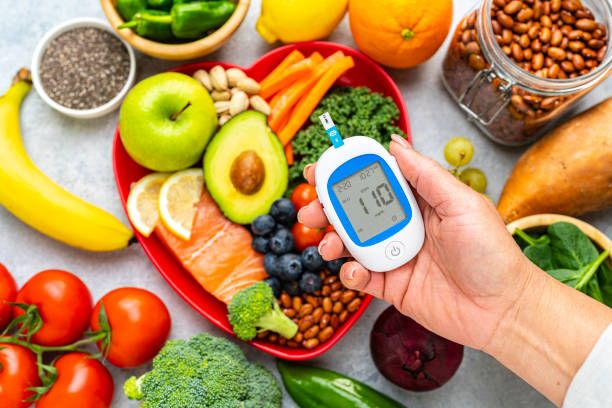
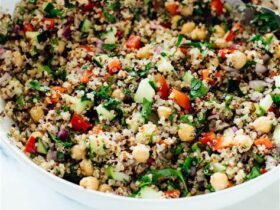


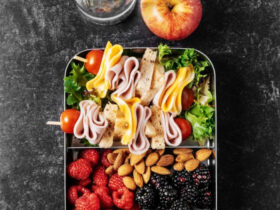
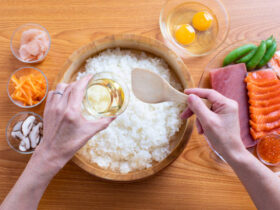
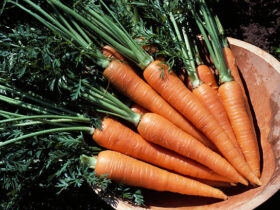


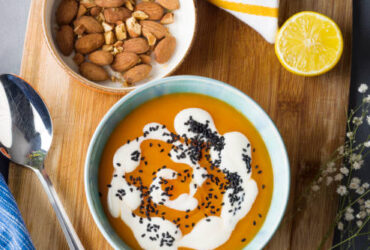

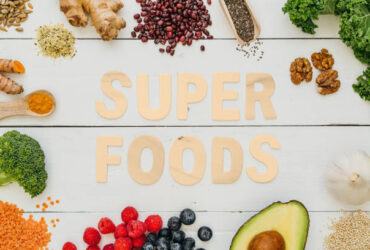


Leave a Reply